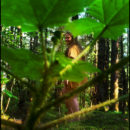We have much more to do and your continued support is needed now more than ever.
Foraging in a Changing Climate
Wild foods center a grounding, healing—and empowering—tradition
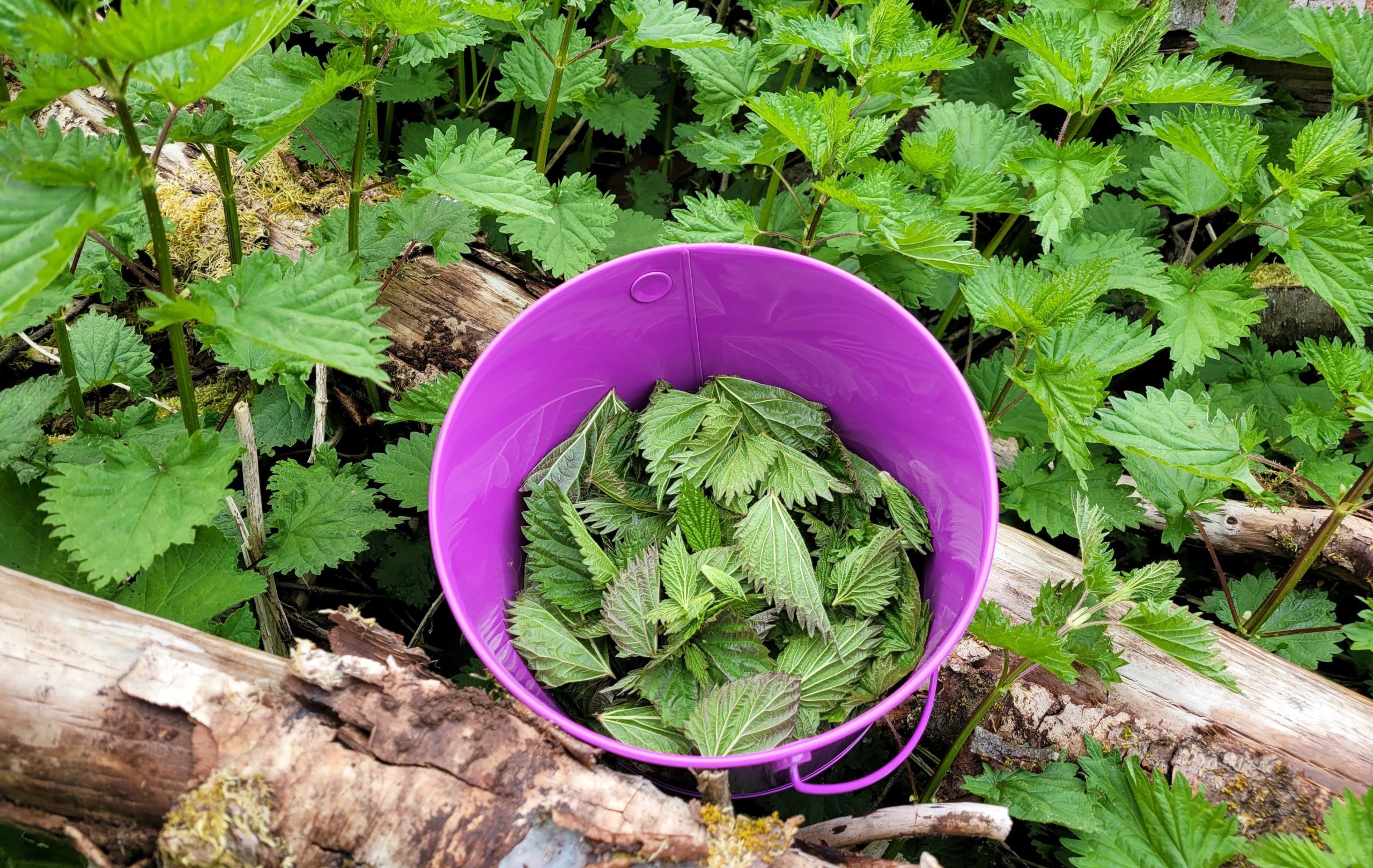
As spring passes and summer approaches, my mind always turns to harvesting on the land with my plant people community. Right now, it’s almost time to harvest my favorite treat — beach asparagus.
The little green, nobbly plants grow right around the high tide line on certain beaches, and I absolutely adore them. I’m a huge salad person and love the sea-salt crunch of beach asparagus as an addition to any leafy green salad. I’m normally not a salt person, but beach asparagus doesn’t taste like salty food from the store — it’s a pure jolt of ocean flavor. I’ve recently learned from a few people who even dehydrate it and sprinkle it on their food as a salt substitute.
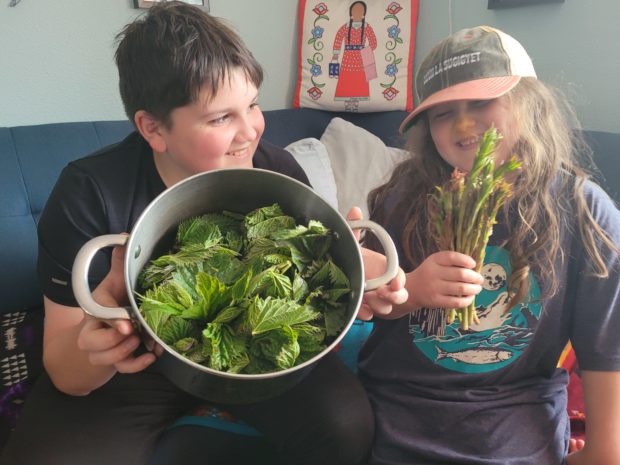
For me, harvesting is about more than just the food I take home. It’s about the healing and community that comes from being together on, and with, the land. It’s something that heals everyone and everything involved — from myself to the tidal ecosystems I’m relating to — as I will explain.
Sometimes I drive my friends a little crazy because I’m incredibly meticulous about removing any stray blades of grass or grains of sand that end up in my beach asparagus while gathering. But I’d rather be out on the beach than hunching over my kitchen counter cleaning late at night after a day on the land, even if it means I harvest slower or take less home. And I’d rather any of that byproduct remains on the beach where it belongs rather than ending up in someone’s trash can.
Last year, on the first day my then 5-year-old daughter was able to harvest her own beach greens, she proudly presented her pillowcase full of beach greens — but also grasses, sand, and seashells — to me. I was so proud of her harvest, and it was also a great opportunity to learn about responsible and respectful gathering!
Powerful plants and making medicine: cottonwood buds, devil’s club, and nettles
My time harvesting on the land is always spent with other people, and the community is a big part of the experience. Being in closeness with people and the land is a healing practice for all involved, us and the land. I always bring my kids, and not only do we learn and solidify our knowledge together, but it’s also healing to know my kids and community are part of that next generation. Despite centuries of colonization and a changing climate, this knowledge will not be lost. I don’t have to learn everything myself, because we’re in this together.
That’s what my time with Haa Tóoch Lichéesh Coalition has taught me. Haa Tóoch Lichéesh is a coalition of healers working together to lift each other up, promoting healing, equality, decolonization, and respect. They bring together healers from a broad diversity of practices to spend time on the land and learn from each other.
Naomi Michalsen is a key player in the coalition and the owner of Kaasei Training and Consulting as well as a plant healer, educator, and leader with years of experience teaching others how to gather, harvest, and prepare local and wild foods to empower and heal themselves. She’s the kind of person who remembers that I have a bitter taste pallet and really love dandelion root lattes but have never harvested them myself so she always makes sure I get some. It’s from her that I first started thinking of harvesting as more than food but as medicine. It’s a way of relating to the Tongass that’s more traditional, more restorative, not the one that I was necessarily raised with.
Sure, I grew up eating salmon and beach asparagus, but making medicine was new to me.
At an outdoor Haa Tóoch Lichéesh gathering in the spring of 2021, Naomi brought up generous quantities of salal berries and cedar boughs from our shared hometown of Ketchikan. She began teaching us all the backgrounds, uses, and preparations of these powerful plants.
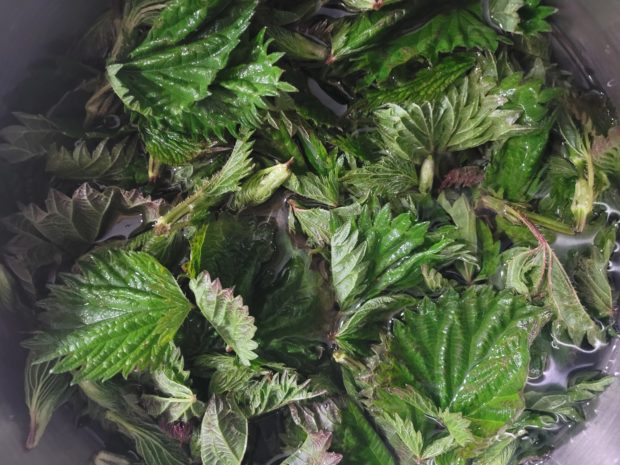
Nettles are an underappreciated, sometimes even feared, plant. But I’ve learned to love them. When I harvest them here in Juneau I harvest with friends at a site where people have tended to these nettle stands for centuries, and there is a special feeling to harvesting from a garden that has been around for longer than our own lifetimes. Nettle is a special thing, many people are hesitant to harvest it because of its sting, but simply give it a little heat, and the sting is destroyed, releasing its fresh green, earthy, and pleasantly bitter flavor that’s perfect in pesto or used in place of spinach for a dip.
As the climate is changing, my children are growing and my community is healing, I’m comforted by this lesson. With a little bit of Indigenous knowledge, even something that stings can be turned into a medicine.
When life gives you nettles — make pesto!
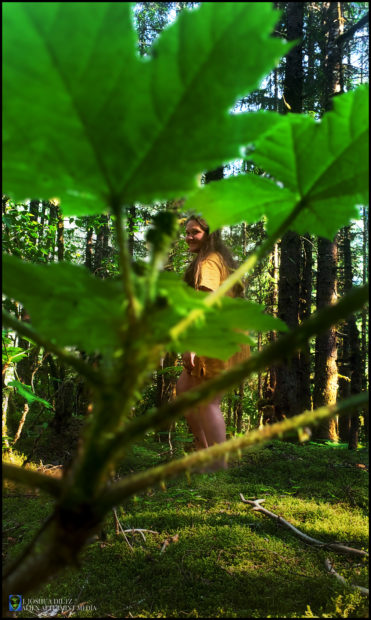
About the author
Heather Evoy is the Indigenous Engagement Lead at Southeast Alaska Conservation Council. Heather was born and raised in Ketchikan and is an Alaska Native, Tsimshian, and Tlingit. Heather has lived in Juneau since 2012 where she enjoys harvesting, advocating for plant knowledge, and connecting with the land.
She and her two children enjoy being members of two intertribal dance groups and learning their Tsimshian ancestral language of S’malgyax. She earned her bachelor’s degree from the University of Alaska Southeast with focus areas on Anthropology and Environmental Sciences.

